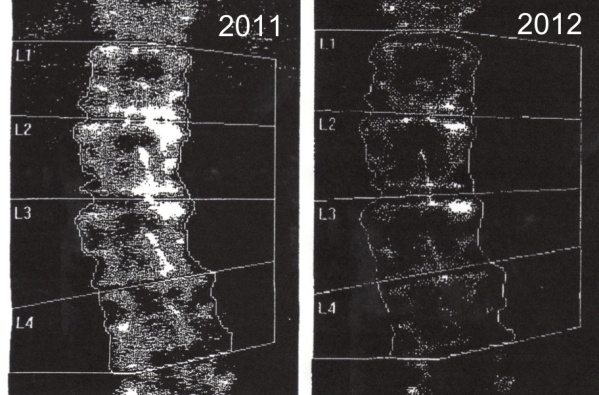Osteoporosis is decreased density of the bones caused by an imbalance in bone modeling in which resorption takes over the formation.
It is a wide spread disease with Post Menopausal Osteoporosis being the most common type.
Medical science considers the cause of osteoporosis unknown.
Medications for osteoporosis try to alter the bone modeling process, but they have many side effects.
Female, 63 y.o., had pain in the lower spine, right hip, right knee, and general muscle weakness and deterioration in both legs. Hew diagnosis was:
She has been prescribed biophosphonates to treat the osteoporosis, but she refused taking them.
The patient treated herself at home with her own coMra Delta, performing the following treatments from the User Guide:
The patient begin using coMra November 2010, for osteoarthritic pain and the weakness coupled with decreasing mobility. She has been doing 1-3 treatments per week.
After she was diagnosed with osetoporosis in March 2011, she started doing all of the above treatments 2-4 times per week.
coMra Pro 980 Medical was used.The DXA scans performed in March 2011 and again in February 2012 indicate significant improvement in patient's condition over the 11 month period.

Quantitatively, there is 4.7% increase of the total mass density of her right hip against of expected deterioration/decrease (estimated by the average of the observations of the patients with similar conditions) of 1.5%.

There has been a statistically significant increase in bone mass density of 3.6% in lumber region over an 11 month period. Again the average development is such cases is 1.5% decrease.
The patient reported increased mobility and decreased pain.
Case provided by: Garrett Murrin
Country: Canada